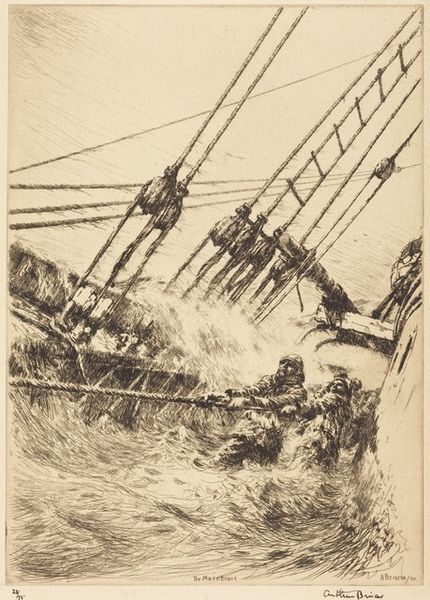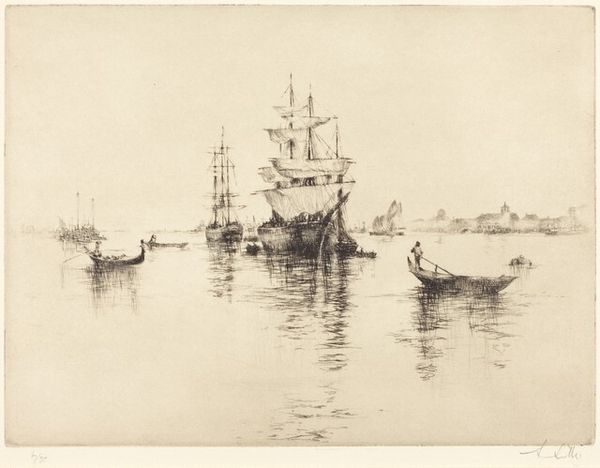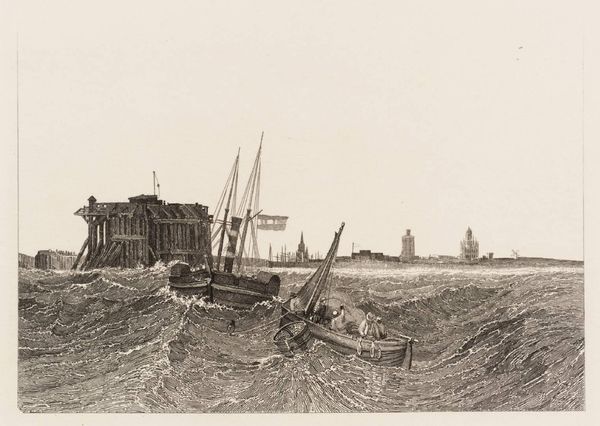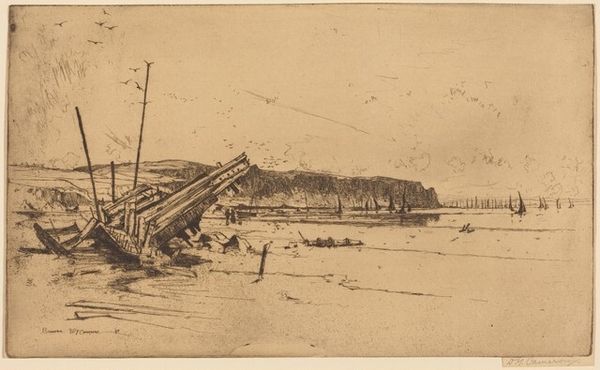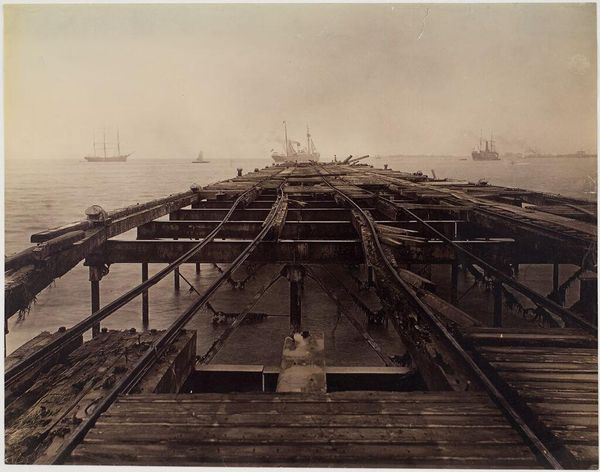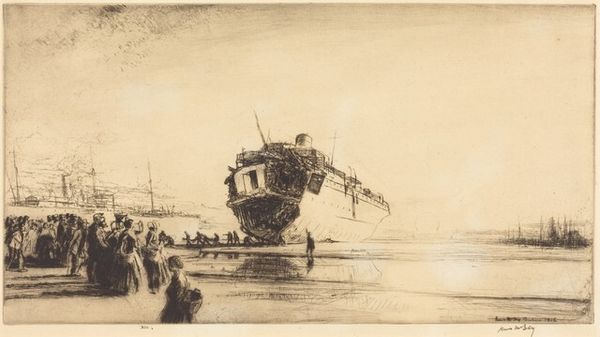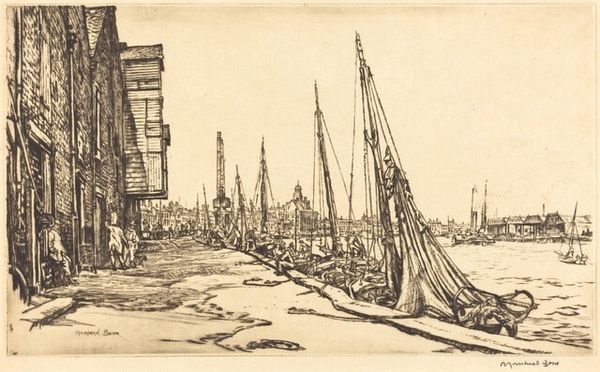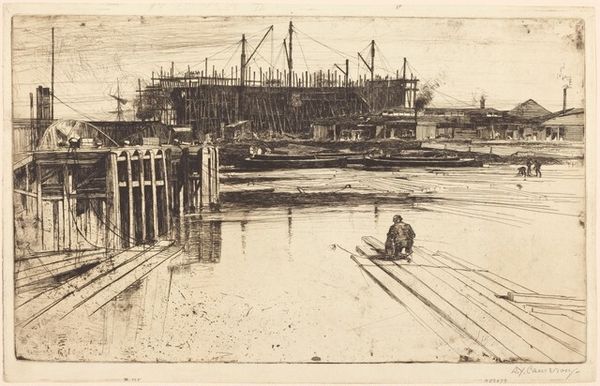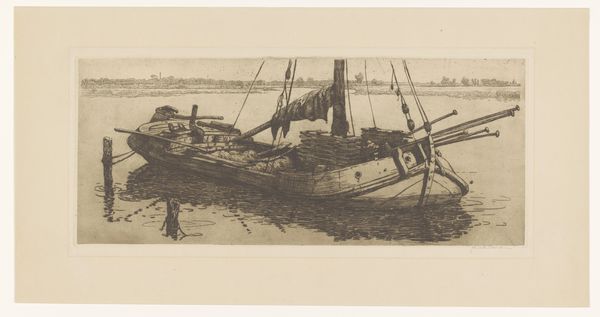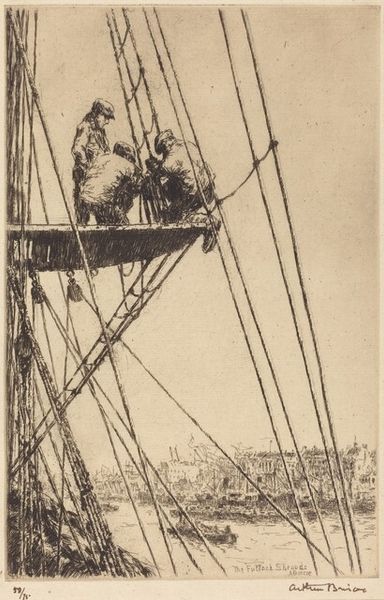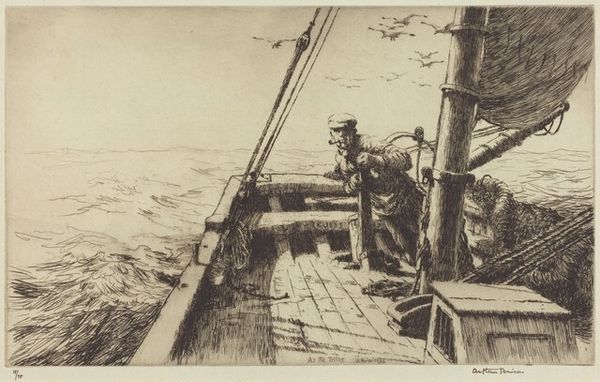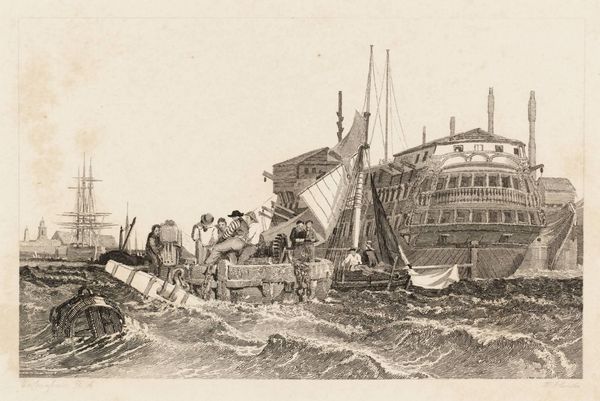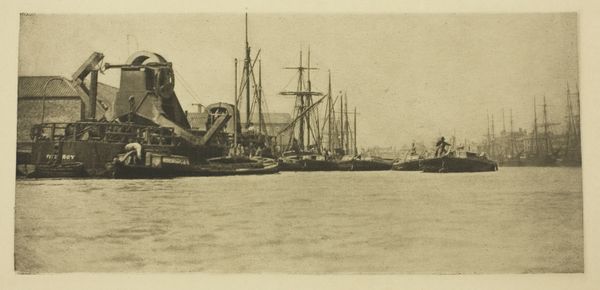
drawing, print, etching
#
drawing
# print
#
etching
#
landscape
#
pencil drawing
#
cityscape
#
realism
Copyright: National Gallery of Art: CC0 1.0
Curator: This etching, titled "In Dry Dock," was completed by Arthur Briscoe in 1928. I'm immediately drawn to its gritty realism; it’s palpable in every etched line. Editor: The high contrast is striking. It pulls my eye along the gangway. It definitely has a somber feel, a muted quality despite the evident activity depicted. Curator: Indeed. This image, captured during a period of significant industrial change, presents the daily lives of dockworkers. The dry dock wasn’t just a place for ship repair, but a hub of labor, often a site of economic disparity. We can understand the etching as a subtle commentary on labor and the working class during the interwar period. Editor: Focusing purely on form, the composition emphasizes depth. The diagonal lines of the scaffolding meeting the colossal ship side create converging vectors, leading our gaze into the harbor. It’s cleverly constructed to compress an expansive cityscape into a relatively small space. Curator: Absolutely. Briscoe was keenly aware of how spaces affect the people inhabiting them. By juxtaposing the massive vessel with the dockworkers, he presents a visual narrative about power dynamics and the scale of industry dwarfing individual efforts. Editor: The artist has achieved remarkable tonal variations through cross-hatching. The level of detail, especially considering this is an etching, demonstrates mastery of the technique. Curator: Let's not forget that harbors and docks were essential to Britain’s maritime power, but also entry points for a constant flow of people. These spaces weren't static; they reflected a fluid, evolving sense of national and cultural identity. This makes "In Dry Dock" so evocative of its time. Editor: I now see the etching as an observation of forms coexisting, of the labor shaping the industry. Curator: This etching urges us to think about our industrial history, while this analysis has pushed me to appreciate the aesthetic strength of its lines.
Comments
No comments
Be the first to comment and join the conversation on the ultimate creative platform.

